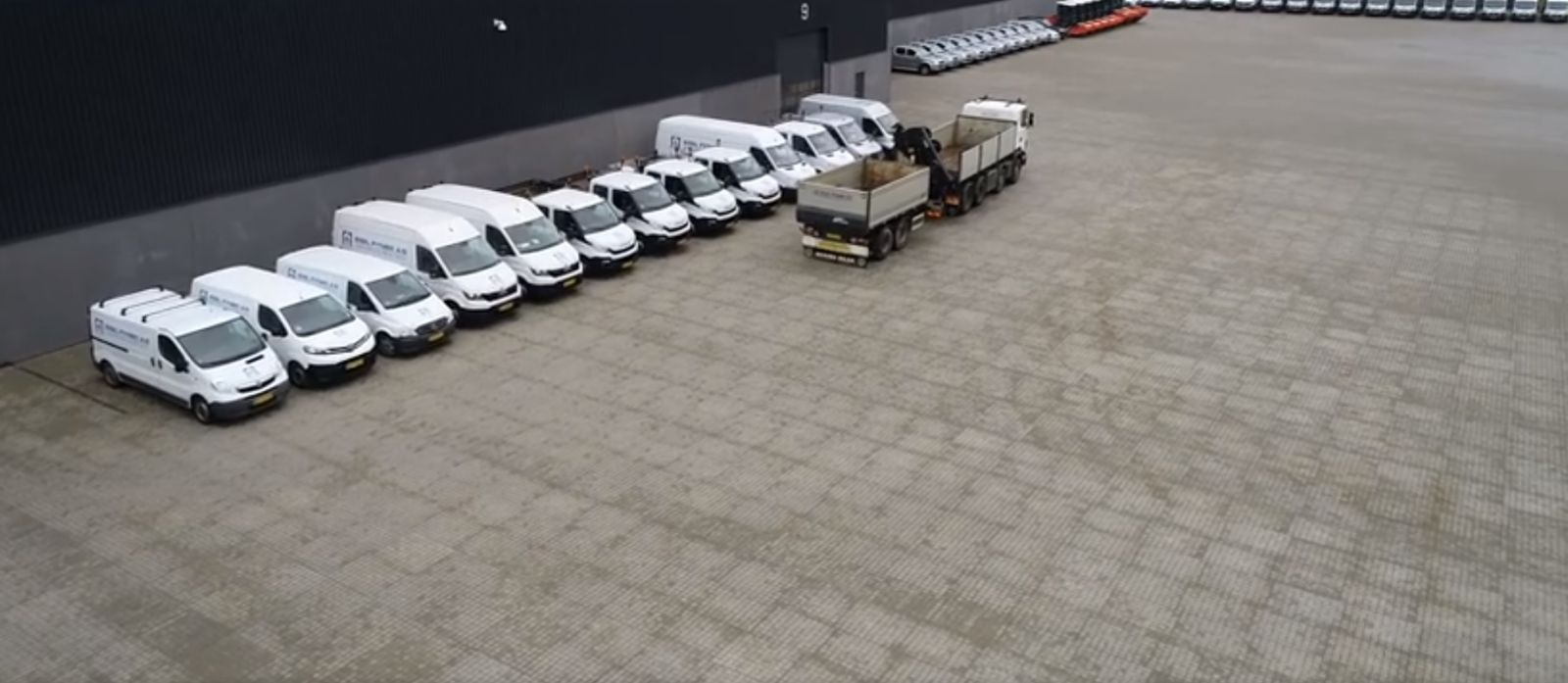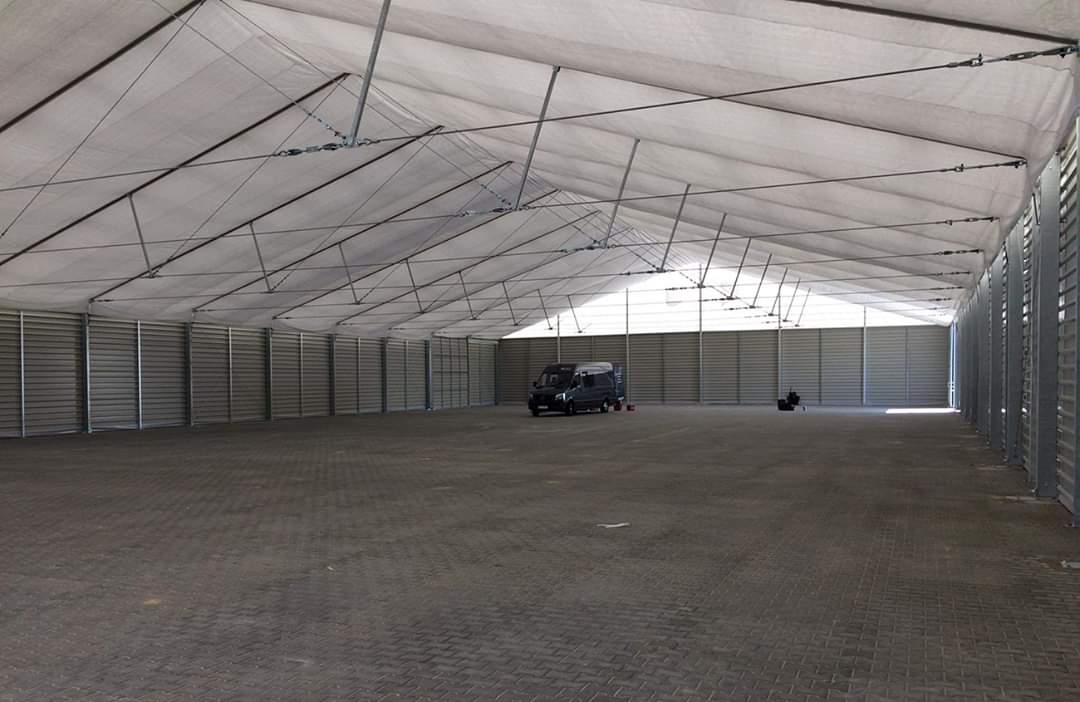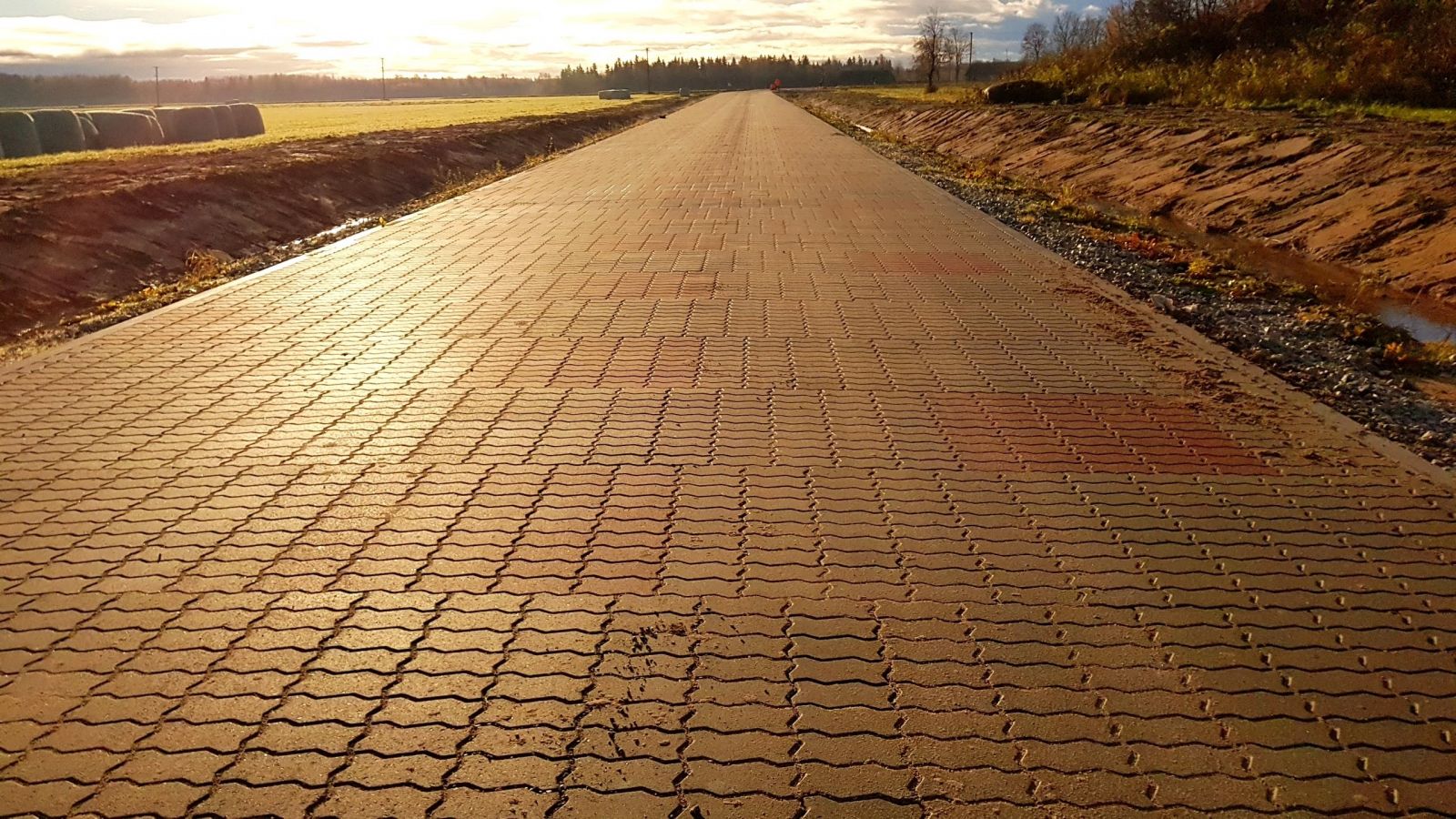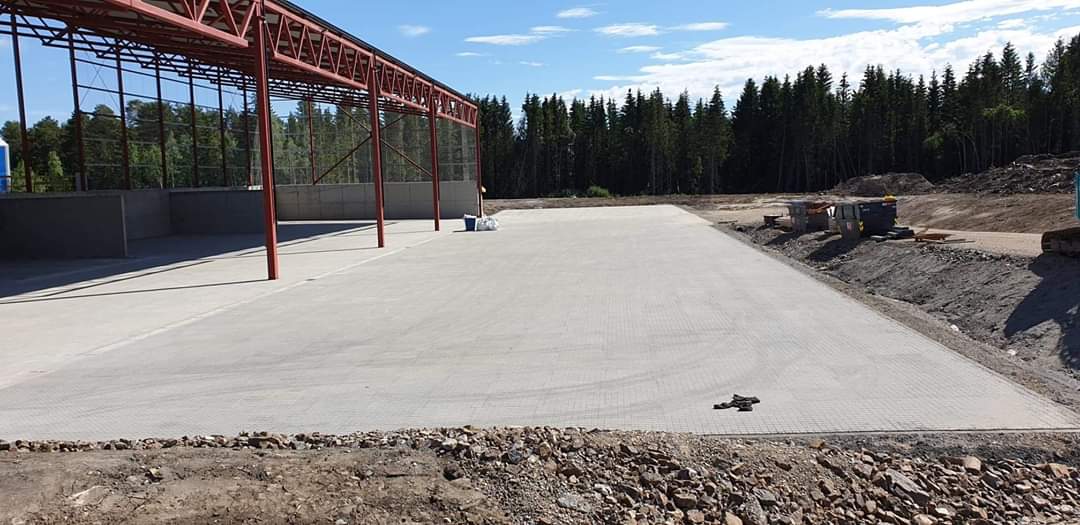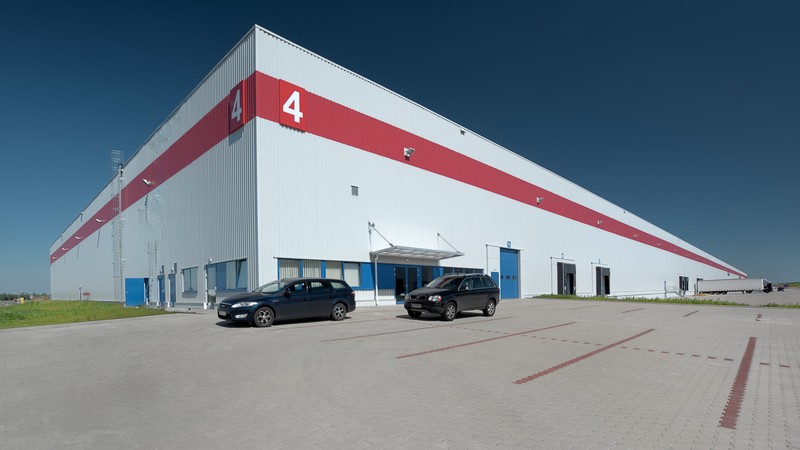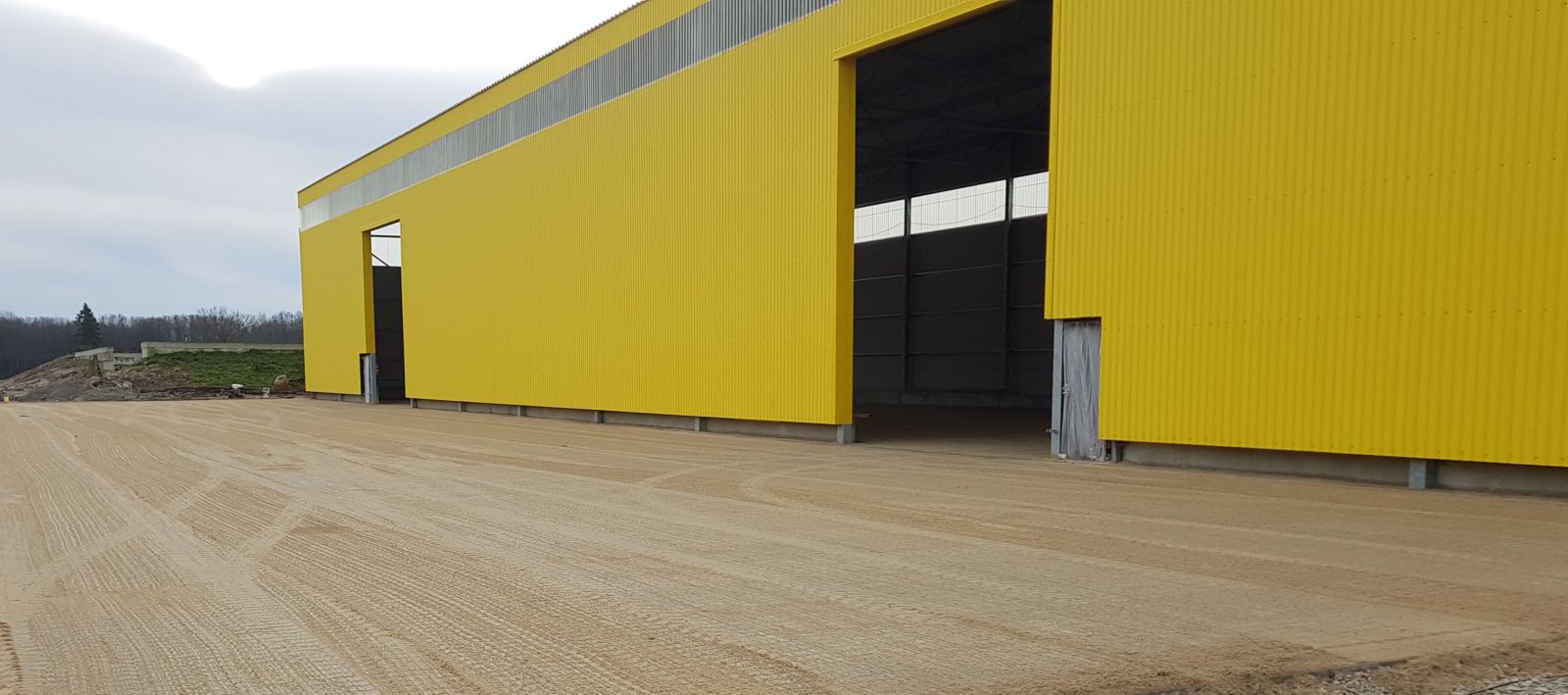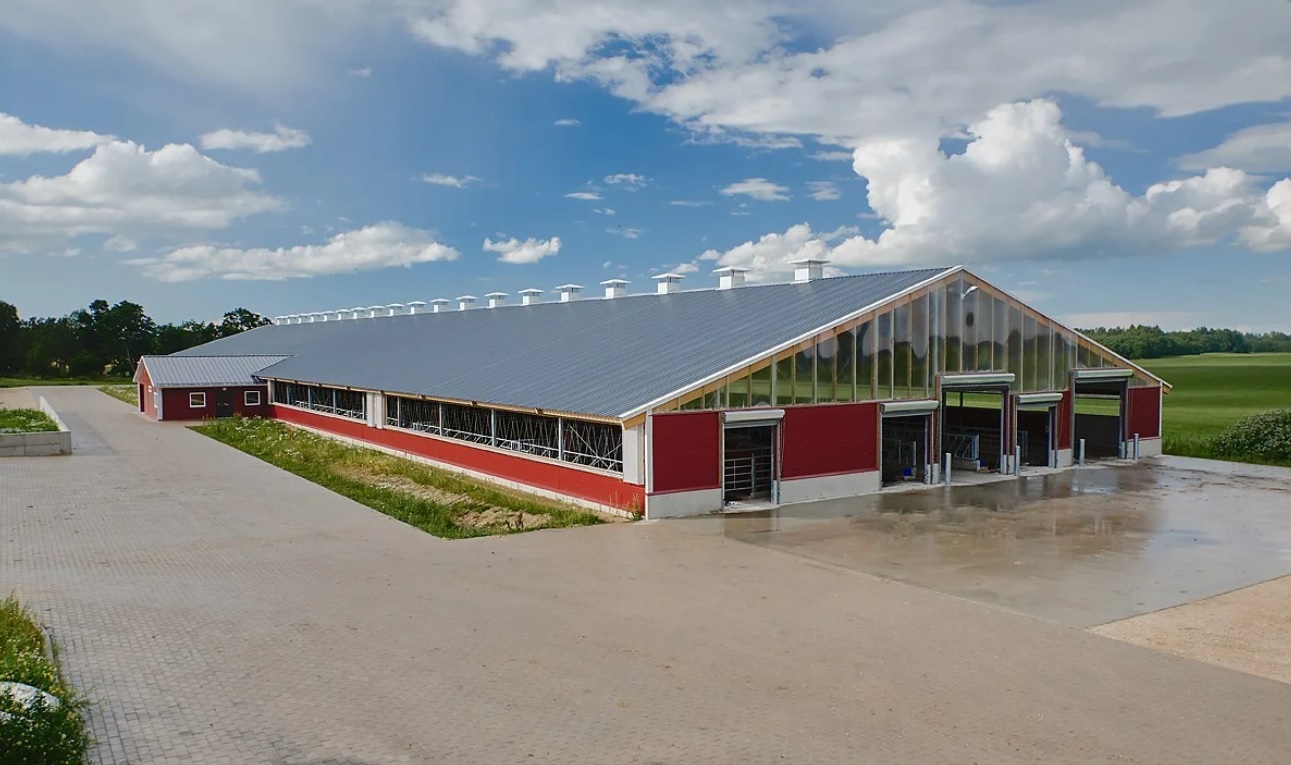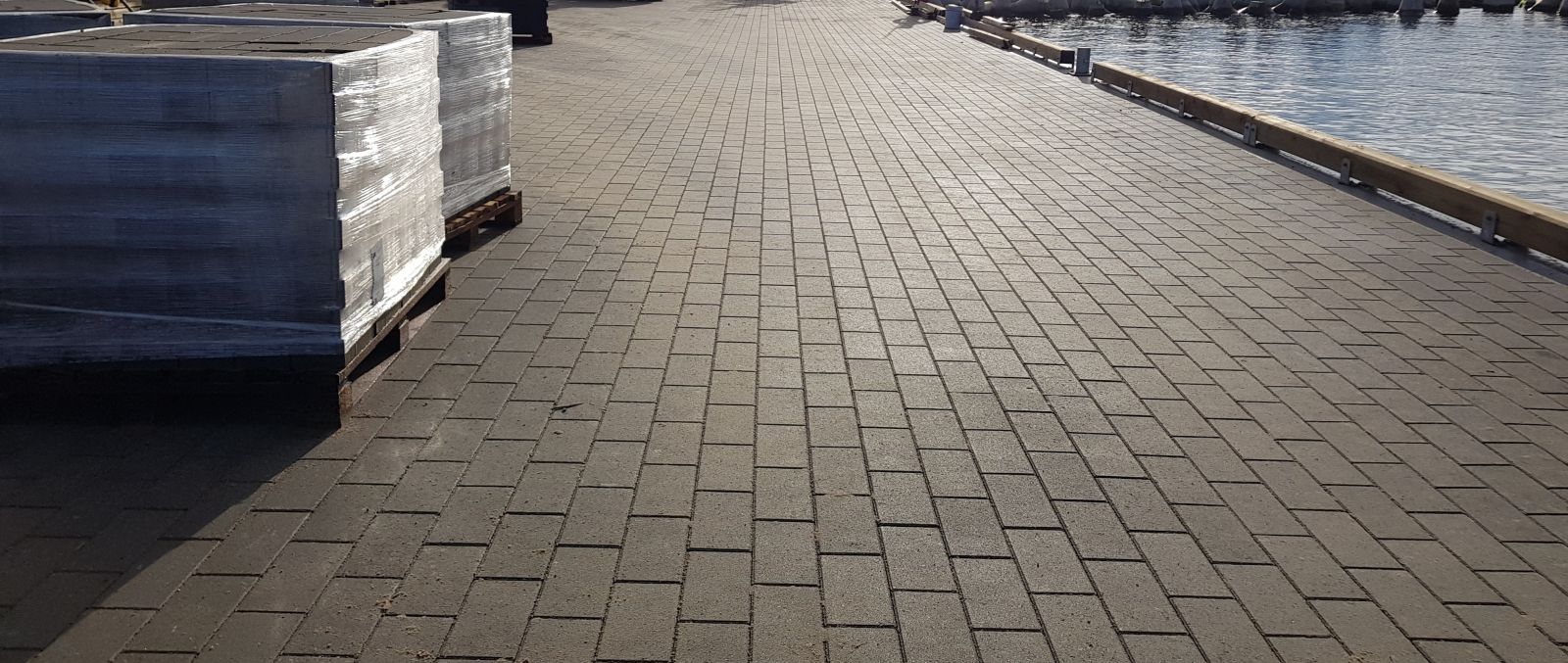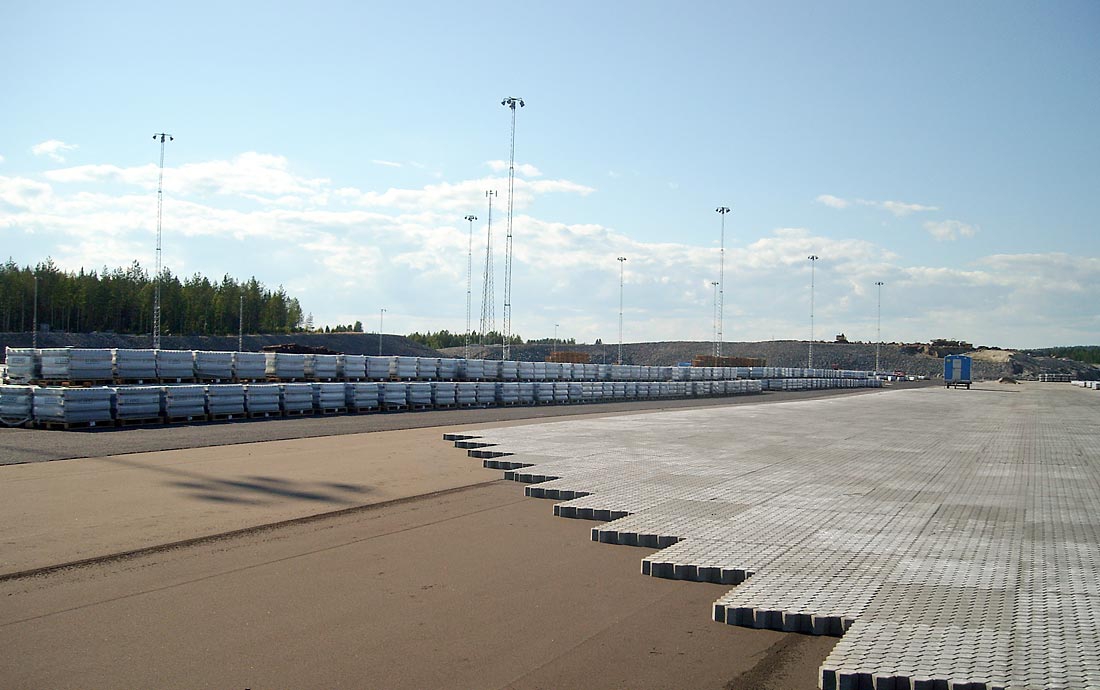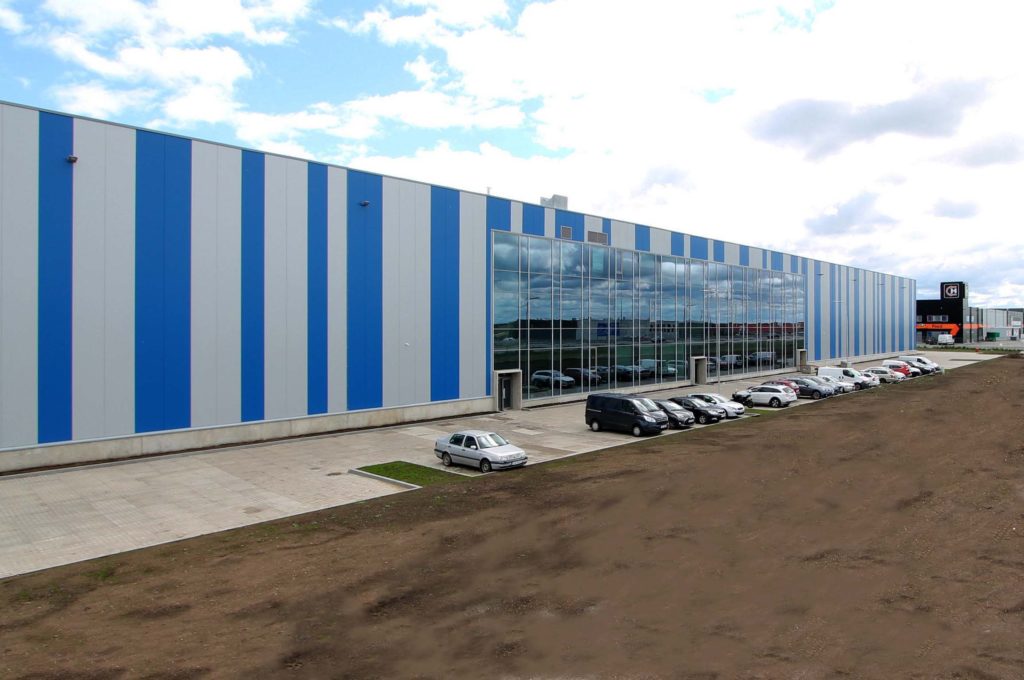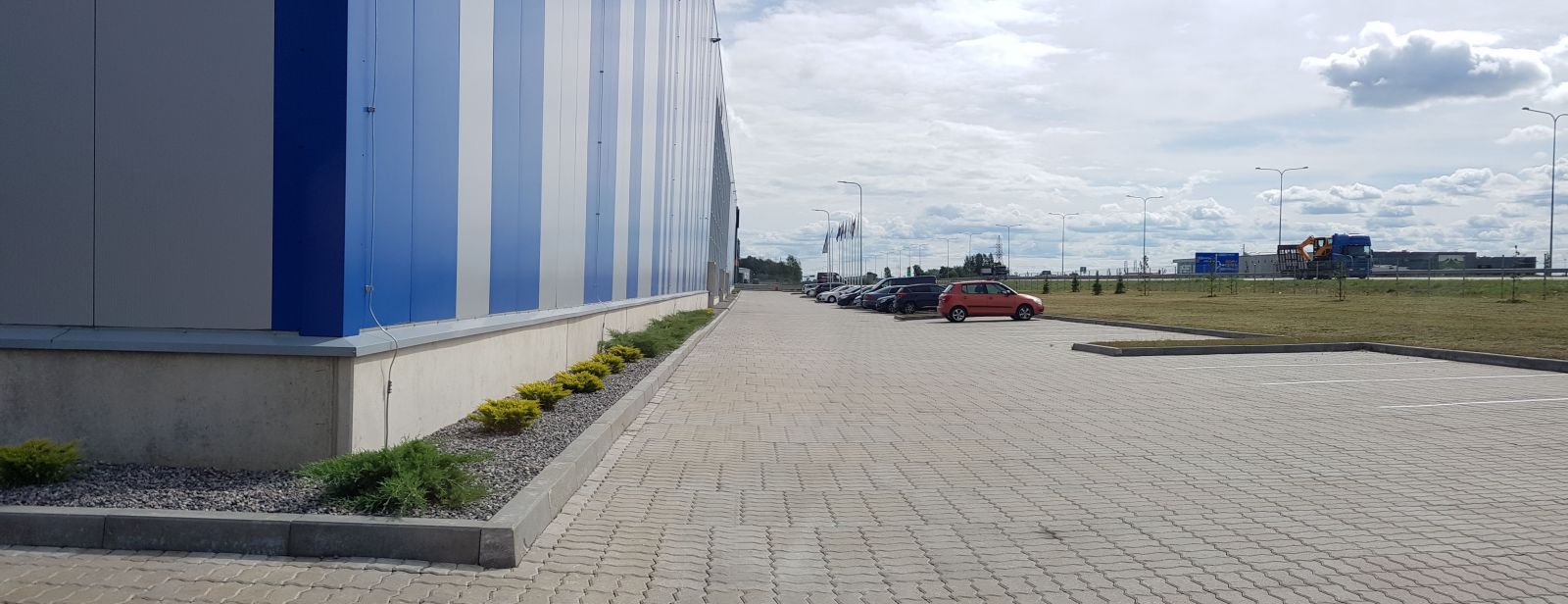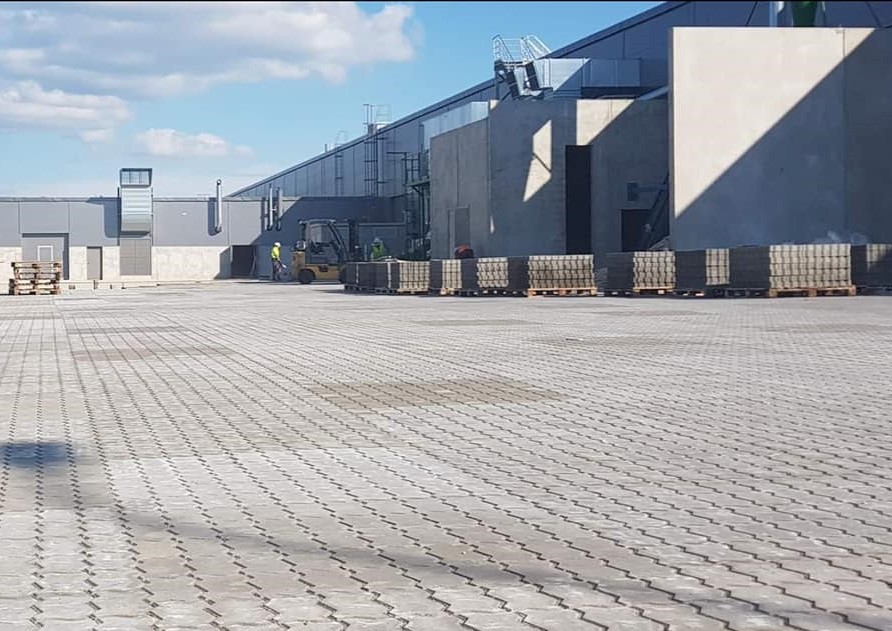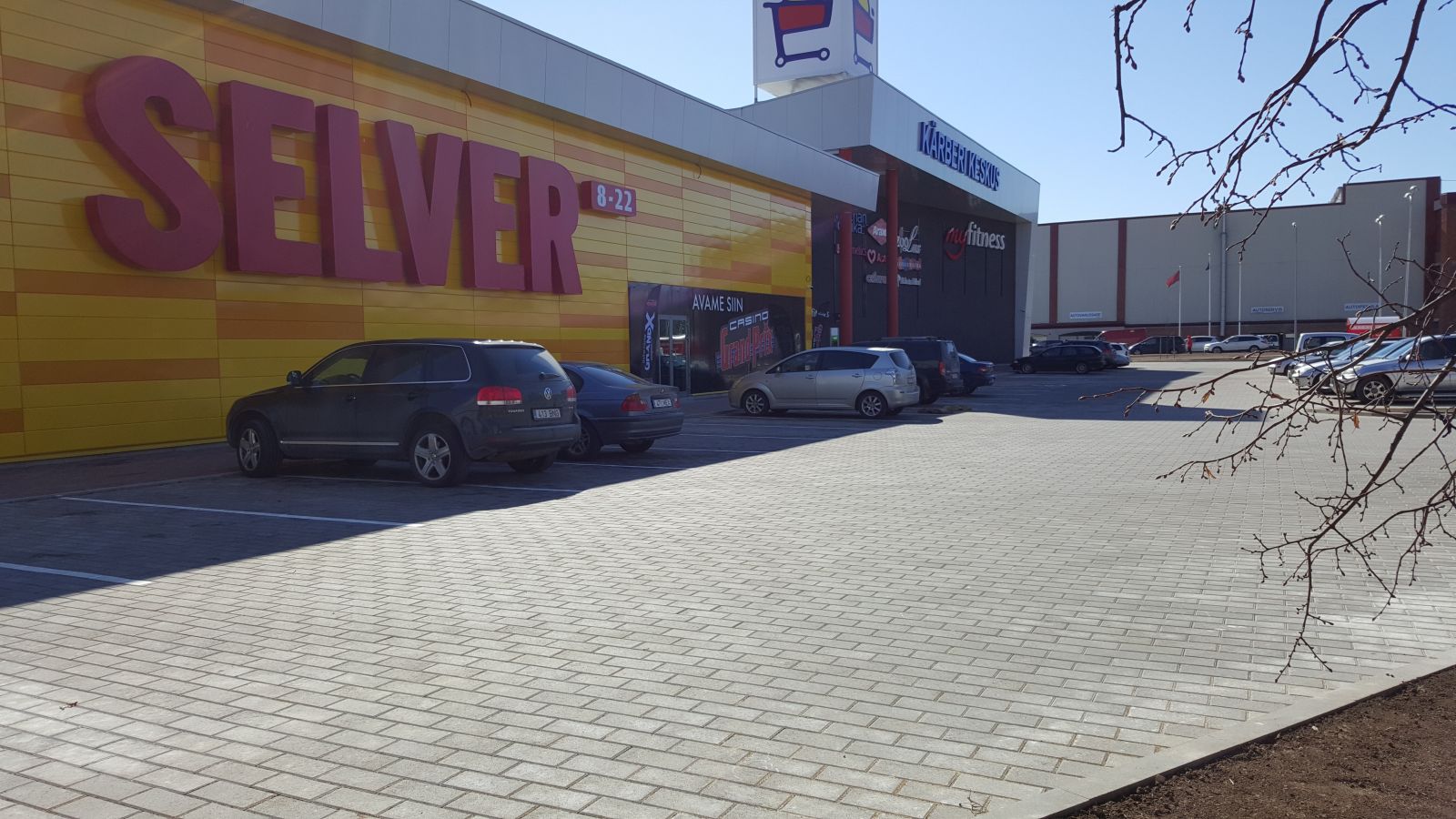Large-scale solutions
Which stone works are large-scale?
Large-scale stone works start with 5000m2 of work. In Estonia, for example, there is a logistics centre in the village of Loo in Harju County with 70 000m2 and the Lookivi Logistics Park in the village of Lehmja in Rae municipality with 28 000m2, or the Linford heavy goods vehicle park in the same area with 11 000m2 of concrete paved area. Pärnu has a plywood industry with 22000m2. A number of shopping centres are covered with concrete pavement, such as Rimi at Põhja pst 17 with 5000m2 and Kärber Selver in Lasnamäe with 12 000m2. In several Estonian rural settlements in large farms, all roads and fields are covered with concrete paving, for example, a 16 000m2 Vahtrafarm in Tali, Pärnumaa, or an 8000m2 goat farm in southern Estonia.
Increasingly, the use of concrete pavement as a substitute for asphalt pavement is now being preferred and designed in the original plan in Estonia. In Estonia, logistics centres, processing industries, harbours and shopping centres have been installed under concrete slabs. For such large-scale works, modern installation techniques are used, which allow the stones to be laid quickly even on short working days, including during dark and inclement weather in late autumn and early spring. Winter has also been warmer in Estonia in recent years, and it has been possible to successfully carry out installation work on the prefabricated rubble base during the winter.
Late autumn, winter, spring is the time when asphalt plants come to a standstill. For large-scale paving projects, a staged installation has suited the main contractors, so that they can use some of the sites themselves earlier in the construction process. There have been projects where the building has been rebuilt with stone slabs in the ground and later windows, doors and concrete flooring. It all depends on the project manager where the construction time is estimated.
The best technical feature of concrete pavement is its higher resistance to dynamic forces and local loads, which is particularly evident in the hot, isolated Estonian summers when heavy vehicles carry the pigment away from the asphalt pavement and the pavement layer starts to degrade. The concrete slab makes it easier for the user to move around the site at higher temperatures, as it does not store the temperature of the sun and does not emit hot temperatures and atmospheric CO2 to the user. So you might think that using concrete is healthier for the user and a step towards reducing CO2 for the world.
Sooner or later, Estonia, like the rest of the world, will start to reuse concrete stones, where owners will renew the use of the stones by selling old stones for reuse and replacing them with new stones.
The solution of cold storage rooms, warehouses floors on concrete slabs has become popular. Residents have built residential driveways and businesses have built heavy goods vehicle access roads. Farmers prefer to use stone roofing over asphalt flooring for their animals because it does not emit heat and is healthier.
A GALLERY of some of the projects that could be a bolder step for you in the future, that replacing asphalt with concrete paving is a better value proposition in every way, and that a paving solution does not “always” have to be cheaper than the price of asphalt today, because concrete paving is better. It is definitely worth looking into the design and installation price of concrete blocks together with the quotation! The pictures show stones from different quarries. The purpose of the gallery is to popularise the use of concrete paving for more large-scale applications.
For large-scale solutions, we strive to be more flexible and to best meet the client’s needs. The best solutions are still when there is more advance notice and up to 3 months agreed. With the first work in spring, it is already time to agree on solutions for cooperation in autumn.


